Growing those round, bright red tomatoes in ergonomic grow bags is the best way to go. They allow proper nutrition and air circulation while checking the soil conditions below them.
However, do you know what size grow bag for tomatoes is ideal? If you don’t, we’re here to help curious gardening enthusiasts like you.
The ideal grow bag size for tomatoes is anything from 5- to 10- gallons. The perfect size depends on the tomatoes you’re growing, including the number of plants and variety.
We’ll also review five relevant facts about growing tomatoes in grow bags. Let’s get going.
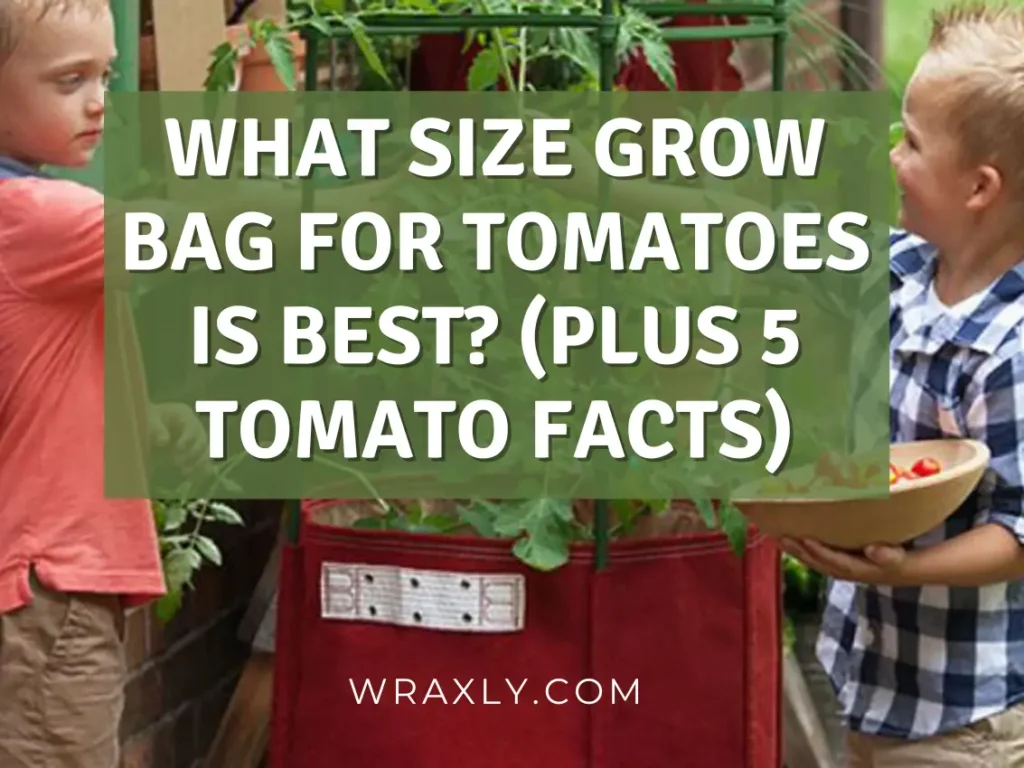
- What is the Ideal Grow Bag Size for Tomatoes?
- 5 Facts to Know about Growing Tomatoes in Grow Bags
- What Are Grow Bag Advantages and Disadvantages
- Final Thoughts
What is the Ideal Grow Bag Size for Tomatoes?
Grow bags are best for planting vegetables and fruits in a small or moderate space. These unique containers ensure a healthy and happy tomato plant, which will result in fiery red, juicy, crunchy, and tasty tomatoes.
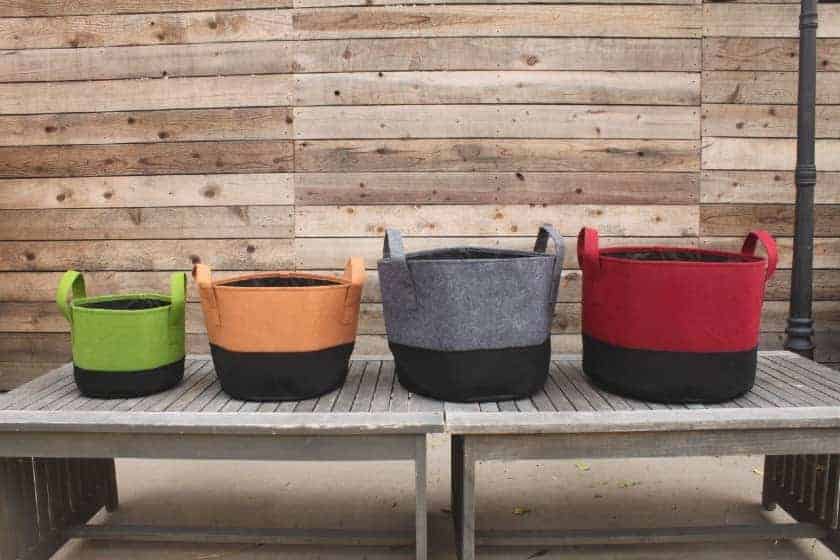
Below are the best grow bag sizes for tomatoes:
- Single tomato plant: a 5- or 7-gallon bag; 13 inches in diameter and 12 inches in depth. Best for dwarf cherry tomatoes, tear-shaped tomatoes, patio F hybrid tomatoes, etc.
- Multiple tomato plants (ideally 2): a 20-gallon bag; 20.5 inches in diameter and 14 inches in depth.
- Multiple tomato plants (ideally 3): a 30-gallon bag; 24.6 inches in diameter and 15 inches in depth.
So this is how you should size up the grow bags and plant tomatoes for optimum growth. Make sure of the proper spacing between multiple plants in a grow bag. Otherwise, the air circulation may be interrupted, limiting the nutrition and growth of the plants.
5 Facts to Know about Growing Tomatoes in Grow Bags
Planting and growing anything in your personal garden can be tricky. And when you’re eyeing some delicious and juicy tomatoes hanging from the vines, failure can be heartbreaking.
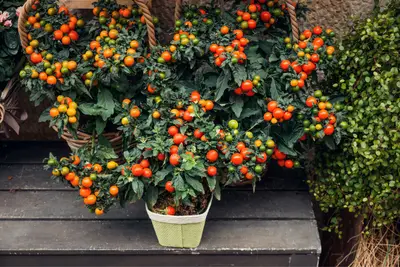
To have the highest rate of success, be aware of these five facts besides knowing what size grow bag for tomatoes is ideal.
1) What Are the Best Grow Bags for Tomatoes?
When you’re gardening all by yourself, it’s essential you select the best grow bags for tomatoes. You should know the material, types, shapes, and budget of grow bags that will work out best for your garden.
The best grow bag material you should look for is a non-woven fabric. Fabric-made grow bags are breathable and light. They drain well, allowing your tomato plants to get rid of excess water while absorbing exactly what they need.
There are square, round, and rectangle shapes of grow bags on the market. So calculate your garden or yard space to select which shape may suit your needs best. Besides, different colors, styles, and designs are also a consideration. So go by your mood and aesthetics.
Regarding color, you might choose black for your grow bags so that water stains are less noticeable. However, keep in mind that black fabric can also absorb heat, which can damage the roots of your plants.
Regarding budget, having an idea of how many tomato plants you want to grow will tell you how many grow bags are required. And that gives you the total cost for grow bags in your garden. A durable non-woven grow bag may cost from $30 to $50.
Recommended Fabric Grow Bags
| Image | Title | Prime | Buy |
|---|---|---|---|
 Top
Top
Top
Top
Top
Top
Top
Top | Gardzen 10-Pack 5 Gallon Grow Bags, Aeration Fabric Pots with Handles | PrimeEligible | Check Price on Amazon |
Top | Wraxly Fabric Grow Bags - 7 Gallon Colorful Two-Tone Planter Pots. Best Gardening Gift for Plant Lovers! [5-Pack of Assorted Colors - Plus Black Bonus Bag!] | PrimeEligible | Check My Price on Amazon |
 Top
Top
Top
Top
Top
Top
Top
Top | VIVOSUN 10-Pack 15 Gallon Grow Bag, Reinforced Planter Fabric Pot for Gardening | PrimeEligible | Check Price on Amazon |
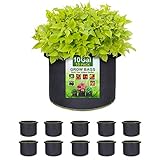 Top
Top
Top
Top
Top
Top
Top
Top | SunArea 10-Pack 10 Gallon Grow Bags, Thickened Nonwoven Aeration Fabric Pots with Reinforced Handles, Heavy Duty Plant Grow Bag for Gardening | PrimeEligible | Check Price on Amazon |
 Top
Top | VIVOSUN 5-Pack 20 Gallon Plant Grow Bags, Heavy Duty Thickened Nonwoven Fabric Pots with Handles | PrimeEligible | Check Price on Amazon |
 Top
Top | JERIA 12-Pack 5 Gallon, Vegetable/Flower/Plant Grow Bags, Aeration Fabric Pots with Handles (Black), Come with 12 Pcs Plant Labels | PrimeEligible | Check Price on Amazon |
2) Fill With the Best Soil for Tomatoes in Grow Bags
You shouldn’t compromise on using the best soil for tomatoes in grow bags. Per many expert gardeners, potting soil is the best soil to go with. Potting soil is made of totally soilless materials, such as bark, peat moss, perlite, etc.
Potting soil is the best for growing tomatoes since it evenly drains water from the grow bag. It keeps the overall soil content moist but less soggy.
Recommended Potting Soil
| Image | Title | Prime | Buy |
|---|---|---|---|
 Top
Top
Top
Top | Miracle-Gro Potting Mix 2 cu. ft. | PrimeEligible | Check Price on Amazon |
 Top
Top
Top
Top | Burpee Premium Organic Potting Mix, 9 quart | PrimeEligible | Check Price on Amazon |
Top Top
Top
Top
Top | FoxFarm Ocean Forest Potting Soil Mix Indoor Outdoor for Garden and Plants | Plant Fertilizer | 12 Quart + THCity Stake | PrimeEligible | Check Price on Amazon |
 | Espoma Organic Potting Soil Mix - All Natural Potting Mix For Indoor & Outdoor Containers For Organic Gardening, 8 qt, Pack of 1 | PrimeEligible | Check Price on Amazon |
 | Miracle-Gro Indoor Potting Mix 6 qt., Grows beautiful Houseplants | PrimeEligible | Check Price on Amazon |
 | House Plant and Tropical Plant Potting Soil - Re-Potting Soil for All Types of Indoor House Plants, House Plant Re-Potting Soil - 8QTs | PrimeEligible | Check Price on Amazon |
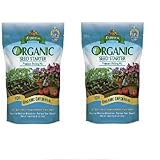 | Espoma 16 qt. Organic Seed Starter Premium Potting Mix (2) | Prime | Check Price on Amazon |
 | Fort Vee Compost-Based Potting Mix, 18 Pounds, Organic Nutrient-Boosted Potting Mix | Prime | Check Price on Amazon |
3) Consider the Tomato Varieties
You need to decide on which type of tomatoes you’re planning to grow. Choosing the appropriate variety will help you decide on the right grow bags, soil, and space.
The basic two tomato types are determinate and indeterminate. Determinate tomato plants grow not more than four feet and don’t grow after flowering. Conversely, an indeterminate tomato plant can grow to five to eight feet in its lifespan.
Ideally, determinate tomatoes are the best types to cultivate in grow bags.
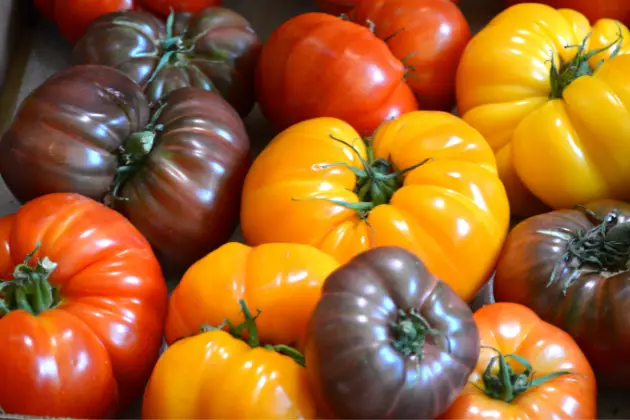
Below are a few of the many indeterminate tomato plants you may consider growing in grow bags:
- Big Boy Bush Tomato: (slicing tomato). The big boy bush tomato is the perfect addition to any garden. With its large size and bountiful fruit, this tomato is sure to please any gardener. The big boy bush tomato is also easy to care for, making it a great choice for even the most novice gardener.
- Bush Champion: (slicing tomato). The bush champion tomato is the ideal tomato for the home gardener. It is a compact plant that produces an abundance of large, juicy fruits. The fruits have a deep red color and are perfect for slicing and eating fresh.
- Bush Early Girl: (slicing tomato). The bush early girl tomato is a type of tomato that is perfect for those that love to garden. This tomato is known for its ability to produce fruit early on in the season, making it ideal for those that want to get a head start on their gardening. Additionally, the bush early girl tomato is known for being a very hearty plant, meaning that it can withstand colder temperatures and still produce fruit.
- Bush Goliath: (slicing tomato). This variety features large, juicy tomatoes that are perfect for slicing and adding to salads or sandwiches. The bush goliath tomato is also resistant to diseases and pests, making it a great choice for gardeners looking for a low-maintenance plant.
- Patio Princess: (cherry tomato). The patio princess cherry tomato is a hybrid tomato that is bred to be disease resistant and produce high yields. This tomato is perfect for those who love to garden, as it is easy to care for and produces an abundance of fruit. The patio princess cherry tomato is a deep red color and has a sweet flavor that makes it a favorite among home cooks.
You should explore which type works best with your climate and taste.
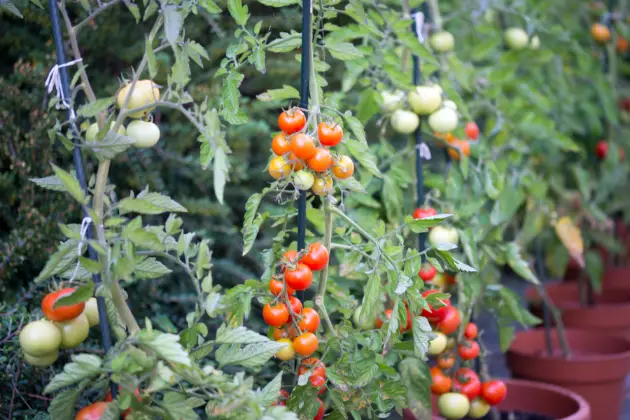
4) Decide What Size Grow Bag for Determinate Tomatoes to Use
Deciding what size grow bag to use for determinate tomatoes should be easy now.
You should choose the largest size as you can, but at the minimum look for a size that is at least 24 inches deep and at least 12 inches in diameter. Generally, a 5-, 7-, or 10-gallon grow bag will be ideal.
5) Location and Weather for Planting Tomatoes in Grow Bags
Apart from considering tomato grow bags in terms of size, material, and price, you should also think about the location and weather.
Location Wise
You can do both indoor and outdoor tomato plantings within your growing zone.
As for indoor planting, select a place that faces south, receiving bright sunlight for 8-10 hours a day. You’ll have to rotate the tomato plants every day for the stems to receive enough sunlight and healthy growth.
And when it comes to outdoor planting, again make sure that the spot has enough sunlight but is deprived of gusty wind. Cool wind may interact with the temperature required by your tomato plants. You may erect thick fences around the more exposed parts to protect them from the wind.
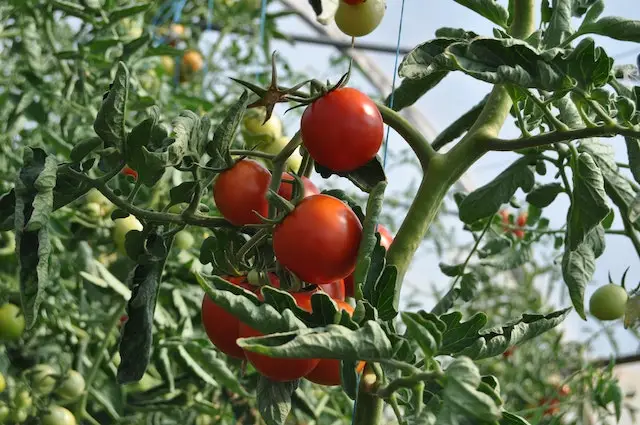
Weather Wise
The ideal temperature for growing tomatoes is between 50 F degrees and 85 F degrees, depending on the variants you choose to grow. The temperature shouldn’t be too high that it bakes the roots, nor too moist during rainy seasons.
What Are Grow Bag Advantages and Disadvantages
Grow bags are essential elements for home gardening, especially for growing tomatoes, beets, carrots, celery, etc. However, they have downsides as well as benefits.
Let’s check some of the grow bag advantages and disadvantages below.
Grow bag advantages:
- Grow bags are usually porous, helping drain excess water from the soil after required absorption.
- Grow bags are breathable. They don’t get heated up easily by the sun, ensuring root safety.
- Five- to twenty-gallon grow bags are portable, so you can easily shift places as required.
- Grow bags are foldable so you can store them when not in use.
- Grow bags ensure that the plants don’t become ‘rootbound’ through a process called air-pruning.
Grow bag disadvantages:
You May Also Be Interested In… Sun Sugar Tomato vs Sungold: Which One is the Better Tomato?
- Grow bags dry-out faster than plants grown in-ground, which means you will need to keep on top of your watering duties.
- Weightier grow bags, such as between 30 and 200 gallons, are quite immobile. Hence, moving them when needed is very tough.
- Grow bags are less durable, hardly exceeding 2-3 seasons.
- They’re costly due to the need for replacing them frequently.
- You won’t find many colorful grow bags, meaning, they might not be that pretty.
For Further Reading
- Sun Sugar Tomato vs Sungold: Which One is the Better Tomato?
- Plum Tomatoes Demystified
- Mastering the Art of Growing Cherry Tomatoes in Pots
- How to Master Hydroponic Tomatoes
Final Thoughts
We hope we have helped you sort out what size grow bag for tomatoes to select while growing tomatoes at home. Now, you know why planting tomatoes in grow bags is fruitful.
We’ve also covered other important factors, including the best grow bag types, soil, tomato variants, weather, and location, along with some pros and cons.
Thus, if you’re planning to grow delicious tomatoes in your garden or yard, use this post as a starting guide.

Darrell has a passion for gardening that he inherited from his father. Go here to read more about the influence his father played in his love for gardening. If you want to send Darrell a quick message, then visit his contact page here.
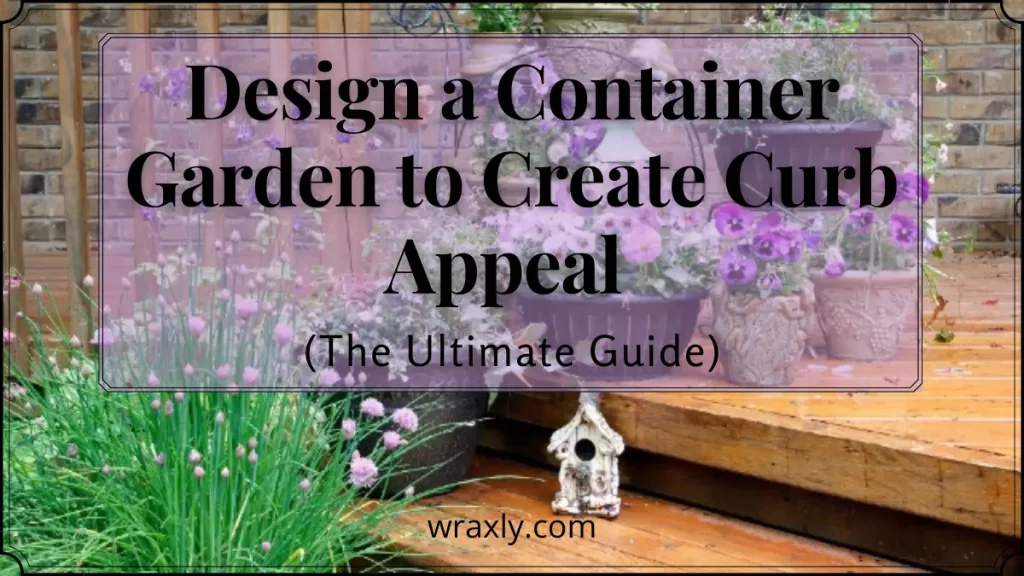
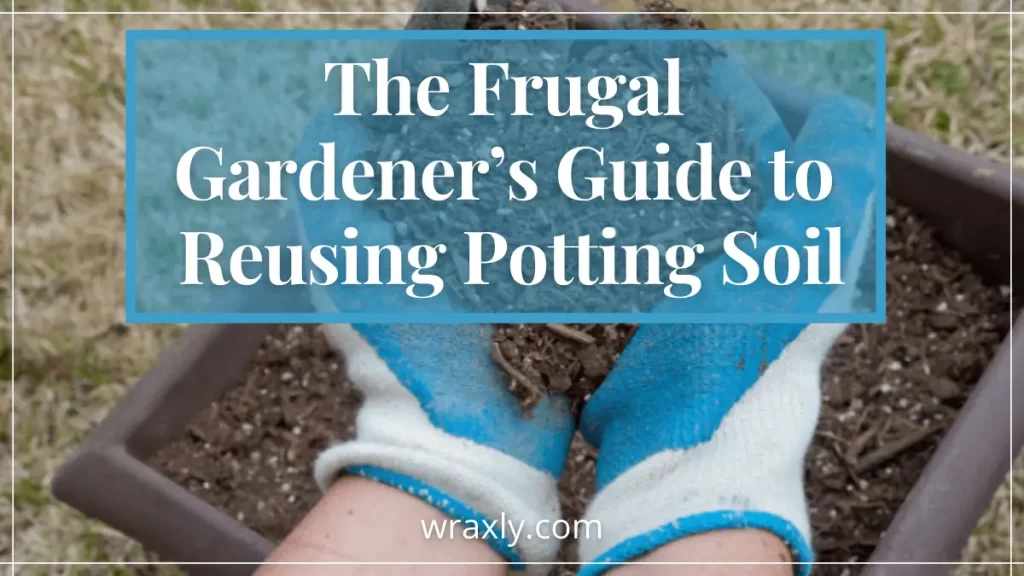
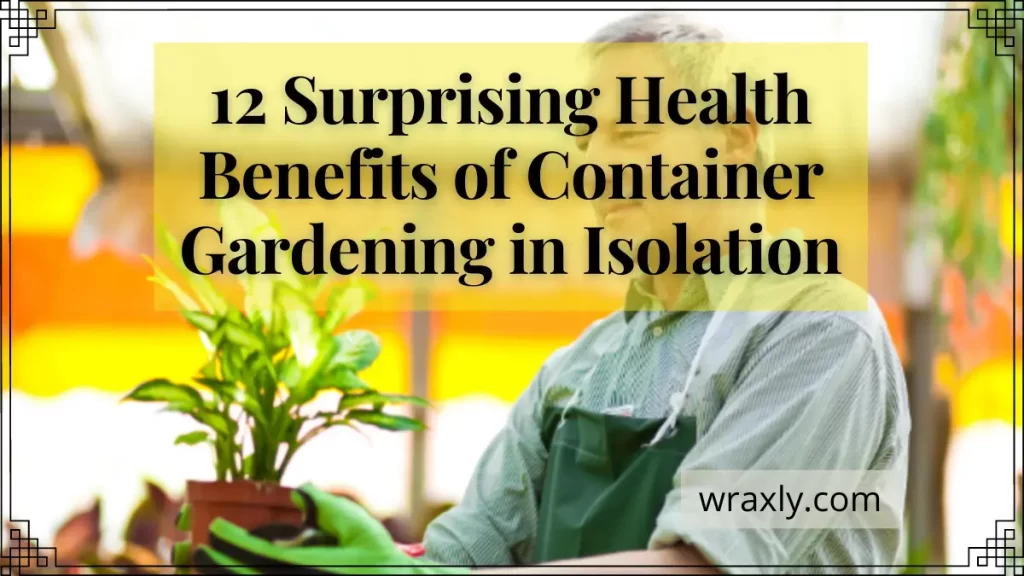
![10 Common Container Garden Mistakes to Avoid [Beginner’s Guide]](https://wraxly.com/wp-content/uploads/2021/02/10-Common-Container-Garden-Mistakes-to-Avoid-Beginners-Guide-1200-1024x576.webp)